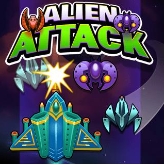The 900-Year-Old Abuelo at the Border Wall
>
No one is certain we’ll actually make it to see Monty, a 900-year-old Montezuma bald cypress tree that’s been rooted in the Rio Grande basin since before the Aztecs rose to power, or what will happen once we get there.
Ernest Herrera, a wildlife biologist at the McAllen Nature Center in south Texas, is one of two scientists taking me to see the tree. University of Texas biology researcher Flor Martinez and Jackie Treviño, Herrera’s former supervisor at the MNC and an environmental organizer, are with us, too. All three of them were born and raised along the U.S.-Mexico border, in the Rio Grande Valley.
While we were sitting at the gas station that morning, they joked that it was good they had me, “a white girl,” with them this time. They’d all been told, via friends and the valley’s environmentalist network, that people had been recently detained by Border Patrol for visiting Monty. They’d been told not to return.
“Even folks from the region who are documented are approached, questioned, and even detained,” Treviño says. “Without question, if you go to some of these wild spaces, you are surveilled and viewed as suspect simply for being there.”
Monty stands a few miles east of McAllen, Texas, and a few miles north of Reynosa, Mexico, the border’s busiest sector. The tree is just 200 yards south of the earthen levee that runs parallel to the Rio Grande, about a mile from its bank on the edge of the river’s floodplain.
Montezuma bald cypresses require a lot of water, so much so that the Aztecs named the species ahuehue, “old man on the water”; its seeds will only germinate in water or wet soil. As time and human intervention have moved the river’s flow about a mile away, it’s near impossible to get the tree enough nutrients.
With the wall, the federal government is taking control of the Rio Grande Valley’s final surviving tracts of native ground and turning it into a no-man’s-land. For the people who call this place home, Monty, the abuelo of the Rio Grande, represents what’s at stake in the fight over the president’s “big, beautiful” barrier.
The Department of Homeland Security is building the wall on the levee in accordance with the 1970 U.S.-Mexico treaty, which prohibits physical barriers within the floodplain. The existing segments, authorized by the 2006 Secure Fence Act, provide a good example of what is to come—in March 2018, Congress approved $600 million for 33 more miles of border wall here.
The slope on the southern side of the levee has been shaved down to make a dead-vertical rise as tall as a single-story house and plastered with cement. Eighteen-foot rust-colored metal slats stand on top, framing the road that runs up and over the levee.
Less than 5 percent of the Rio Grande Valley’s native ecosystem remains unchanged or undeveloped since the 1500s.
In addition to providing habitat for the endangered ocelot, a wild cat native to the area, and the star cactus, more than 500 different bird species can be found here. It’s the confluence of two migratory paths that extend north toward Canada and south toward Mexico. The World Birding Center’s headquarters are located in the valley, in Bentsen-Rio Grande State Park, and thousands of people flock here each year to see red-crowned parrots, highlighter orange Altamira orioles, silky green jays, white-tipped doves, and more.
The Rio Grande Valley also supports one of the highest concentrations of butterflies in the country and is home to the National Butterfly Center. Nearly 150 U.S. butterfly species have no habitat left other than what’s here. According to the center, many won’t fly over a wall. Unfortunately, for both the wildlife and the people dependent on the millions of ecotourism dollars it supports each year, the earthen levee bisects both the National Butterfly Center and Bentsen-Rio Grande State Park.
About 70 percent or more of both sanctuaries will be sequestered on the south side of the wall if the president’s national emergency supersedes the congressional package. “What will happen to the animals then?” Max Munoz, the National Butterfly Center’s grounds manager, asked me.
Environmental experts have been clear: an impenetrable physical barrier cutting across the river basin will be nothing short of devastating, kick-starting the death of the remaining native ecosystem. Nevertheless, the administration has waived 23 environmental laws under the 2005 Real ID Act in order to expedite construction.
Multiple lawsuits have been filed on behalf of environmental and civil rights groups since construction equipment and surveyors were spotted here in early February. In response, the congressional package signed on February 14 includes provisions that will prohibit the construction of border-wall segments within two other wildlife sanctuaries and one historic landmark, but it still grants $1.375 billion for 55 miles of new border wall in these wildlife refuges and the area where Monty sits.
Herrera, Martinez, Treviño, and I drove up and over the levee and through the metal slats to reach Monty. When I stopped the car in a shallow patch of dirt on the other side of the wall, Treviño jumped out and skipped straight to the tree.
Herrera walked up to Monty and placed his palm at the base of a beach-ball-sized knot growing from its trunk. “Stress,” he says. Herrera points out that one of Monty’s three main branches is dying or dead.
Within five minutes, a Border Patrol helicopter begins circling overhead.
“Just ignore it,” Herrera says.
The southernmost150 miles of the river basin known as the Rio Grande Valley is not actually a valley—it’s a delta. In the early 1900s, Anglo landowners rebranded the fertile river basin as a valley to attract ranchers and investors; their campaign transferred landownership from a Latino majority to an Anglo majority within a matter of years, even though almost the entire population remained Hispanic. Today, more than a third of Rio Grande Valley residents are living in poverty, nearly three times the national average.
“It’s easy to target these communities,” Martinez says. “[Proponents of the border wall don’t]carethat they don’t have access to nature. It doesn’t matter, because it’s so easy to take it from them. It’s so easy for them to not have a voice.”
Treviño proudly calls herself a “valley kid.” She was born and raised in the river delta. So were her mom and dad, though on opposite sides of the river.
She sees the increased militarization of the Rio Grande basin and the wall cutting through it as part of a larger pattern of culture erasure, depriving future generations of valley kids of the opportunity to see the parallels between the land and themselves.
“I could see myself reflected in the thornscrub and in the native birds and in the native butterflies,” Treviño said. “The idea of my children not being able to access that is very heartbreaking.”
Monty has become a symbol for that feeling, rooted in the deep well of resilience that also supplies the Hispanic community the river delta. Last month, dozens of people affiliated with the No Border Wall Movement carried 50 jugs of water to the base of Monty’s trunk and soaked it.
After the helicopter pulls up from circling over us, I suggest we walk down the dirt road to the top of the levee.
All of a sudden, a Border Patrol suburban is raising dust at our feet. A woman leans out of the window. “What are you doing here?”
Treviño puts on her sweetest smile. “We’re just here visiting the tree, just enjoying nature!”
The woman eyes us all. “OK,” she says. “Be careful.” She repeats: “Be careful.”
It’s not just Monty, the green jays, or the ocelot that people like Treviño, Herrera, and Martinez are working to defend. It’s the health of their own roots, too; their nativity is threatened by the administration’s rhetoric and relentless pursuit of a border wall.
“These are things we can reverse, these are things we can fix. It’s a matter of speaking up and going out and doing what we can,” Herrera says.
Before we leave Monty, Herrera puts his hand on its trunk once more. I ask if it’s going to die because of the knot and the dead branch. “Oh, no,” he says. “It won’t completely die. It’s old and strong, but it could use some help.”
You May Also Like

AI in Fashion: Redefining Design, Retail, and Sustainability for the Future
February 28, 2025
HOW TO IMPROVE PRODUCTION EFFICIENCY OF A LASER PLATE CUTTING MACHINE
November 22, 2024